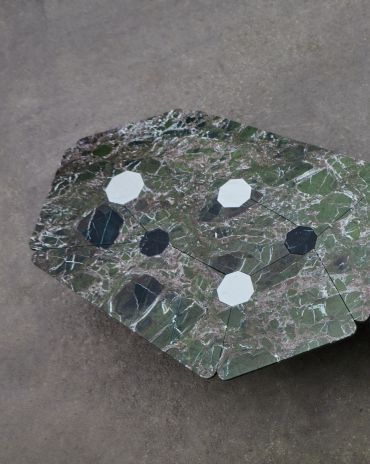Copyright © 2025 Motivate Media Group. All rights reserved.
id Library: Books that present art and architecture’s role in preserving memory and exploring race and grief
The two books in our library this month tackle topics such as race, memory, grief, loss and hope

This month’s book selection explores the ability of art and architecture to immortalise the human experience, tackling topics such as race, memory, grief, loss and hope.
 Grief and Grievance: Art and Mourning in America
Grief and Grievance: Art and Mourning in America
Okwui Enwezor
Published by Phaidon
Grief and Grievance: Art and Mourning in America is a timely and urgent exploration of the ways artists have grappled with race and grief in modern America, conceived by the late legendary Nigerian curator, art critic and writer, Okwui Enwezor, who helped bring global attention to African art. Featuring works by more than 30 artists and writings by leading scholars and art historians, this book — and its accompanying exhibition (also conceived by Enwezor) — gives voice to artists addressing concepts of mourning, commemoration and loss while considering their engagement with social movements, from Civil Rights to Black Lives Matter.
Grief and Grievance includes the works of artists including Jean-Michel Basquiat, Carrie Mae Weems, Nari Ward and Terry Adkins. It also includes essays by the likes of Elizabeth Alexander, Naomi Beckwith, Judith Butler, Ta-Nehisi Coates, Massimiliano Gioni and Saidiya Hartman.
 In Memory of: Designing Contemporary Memorials
In Memory of: Designing Contemporary Memorials
Spencer Bailey
Published by Phaidon
In Memory of: Designing Contemporary Memorials explores the art, architecture and design of memorials around the world from the late twentieth century to today. The 240-page book is illustrated with 200 photographs and features over 60 memorials designed by leading architects including David Adjaye, Tadao Ando, Diller Scofidio + Renfro, Peter Eisenman, Daniel Libeskind, Snøhetta and Peter Zumthor. In Memory of opens with a moving foreword by Adjaye, and includes his 2013 Gwangju Pavilion and 2016 Smithsonian National Museum of African American History and Culture.
“This book comes at a time of rethinking spatial storytelling,” he writes. “It is encouraging us to look more critically at the memorials we’ve made in the past, and question the relevance of memorials in the twenty-first century.
“…The narrative of memorials is a device to project the many things facing people across the planet: nationhood, citizen rights, human rights, climate action. Memorial form is an important act of un-forgetting. I believe this book makes a valuable contribution to the debate about the form of memorialisation and the shape that it can take in the future.”
In Memory of includes a collection of exceptional structures that commemorate some of the most destructive events across the world, including war, genocide, terrorism, famine and slavery – with the urge to immortalise these events within our collective consciousness. The thoughtful essays on the subjects of hope, strength, grief, loss and fear help to contextualise the projects and address the emotional aspects of memorialisation.
The Latest
Dubai Design Week: A Retrospective
The identity team were actively involved in Dubai Design Week and Downtown Design, capturing collaborations and taking part in key dialogues with the industry. Here’s an overview.
Highlights of Cairo Design Week 2025
Art, architecture, and culture shaped up this year's Cairo Design Week.
A Modern Haven
Sophie Paterson Interiors brings a refined, contemporary sensibility to a family home in Oman, blending soft luxury with subtle nods to local heritage
Past Reveals Future
Maison&Objet Paris returns from 15 to 19 January 2026 under the banner of excellence and savoir-faire
Sensory Design
Designed by Wangan Studio, this avant-garde space, dedicated to care, feels like a contemporary art gallery
Winner’s Panel with IF Hub
identity gathered for a conversation on 'The Art of Design - Curation and Storytelling'.
Building Spaces That Endure
identity hosted a panel in collaboration with GROHE.
Asterite by Roula Salamoun
Capturing a moment of natural order, Asterite gathers elemental fragments into a grounded formation.
Maison Aimée Opens Its New Flagship Showroom
The Dubai-based design house opens its new showroom at the Kia building in Al Quoz.
Crafting Heritage: David and Nicolas on Abu Dhabi’s Equestrian Spaces
Inside the philosophy, collaboration, and vision behind the Equestrian Library and Saddle Workshop.
Contemporary Sensibilities, Historical Context
Mario Tsai takes us behind the making of his iconic piece – the Pagoda
Nebras Aljoaib Unveils a Passage Between Light and Stone
Between raw stone and responsive light, Riyadh steps into a space shaped by memory and momentum.
















